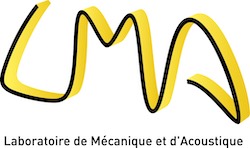Jury
- Carole NADOT-MARTIN, École nationale supérieure de mécanique et d’aérotechnique, Poitiers, Rapporteur
- Yves CHEMISKY, Université de Bordeaux, Rapporteur
- Farid ABED-MERAIM, École nationale supérieure des arts et métiers, Metz, Examinateur
- Noël LAHELLEC, Aix-Marseille Université, Examinateur
- Jean-Marc MARTINEZ, ITER Organisation, Cadarache, Invité
- Thierry DÉSOYER, Ecole Centrale de Marseille, Directeur de thèse
- Stéphane LEJEUNES, CNRS, Co-directeur de thèse
Abstract
The ITER machine has been classified as a Basic Nuclear Installation (INB n°174) by the French nuclear regulator, which implies that it will be the first fusion reactor to go through the complete French nuclear licencing process. The combination of mechanic and electromagnetic phenomena with the heat loads caused by neutron streaming requires a multi-physics approach to the damage assessment ; this has not yet been implemented in the common nuclear codes and standards. In most cases, structural integrity is justified within a linear elastic behaviour. When this route is not enough to respect the design criteria, several non-linear approaches to the material’s mechanical behaviour can be considered, requiring a more elaborated demonstration of the design compliance. Nevertheless, the models proposed in the nuclear model database are sometimes not sufficient to properly describe the experimentally observed cyclic plasticity behaviour and, in particular, the ratcheting and shakedown phenomena. In the first step of our work, we carried out a mechanical test campaign, executed on the SS316L(N)-IG which is the ITER Vacuum Vessel (VV) structural material. This campaign was composed of several cyclic tension/compression tests performed with an imposed stress (almost non-existent in the literature) and cyclic torsion tests conducted with an imposed moment. The objective was to observe the material response under low cyclic fatigue, to better understand the shakedown (elastic and/or plastic) and ratcheting. In the second step of our work, we developed the material behaviour model, starting from a Chaboche’s model available in the literature (elasto-(visco)-plastic model, with various types of hardening). We then enriched it to explicitly take into account the thermomechanical coupling. In addition, based on the observations made on the cyclic tests, we proposed to implement a damage variable on both kinematic and isotropic hardening behaviours. In the final step of our work, we implemented the model in the Abaqus and considered different numerical exemples of interest.


